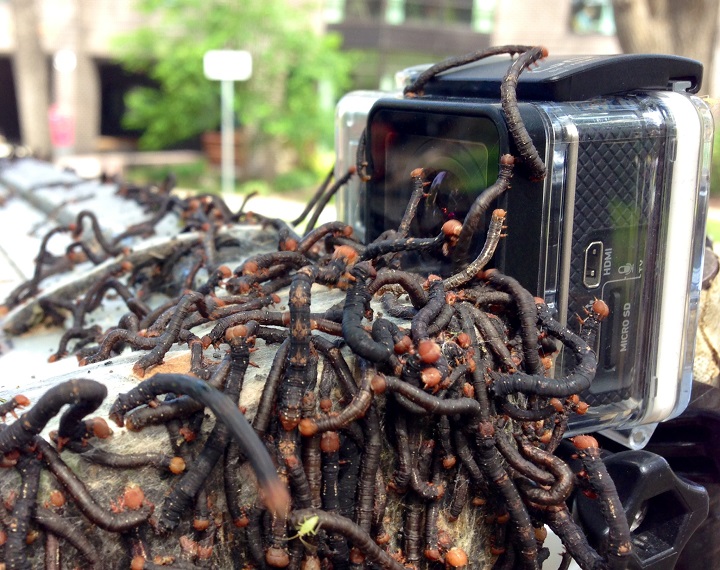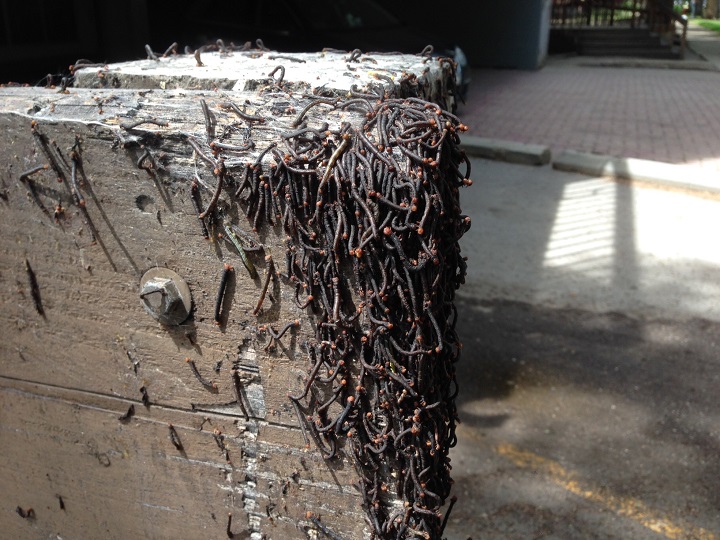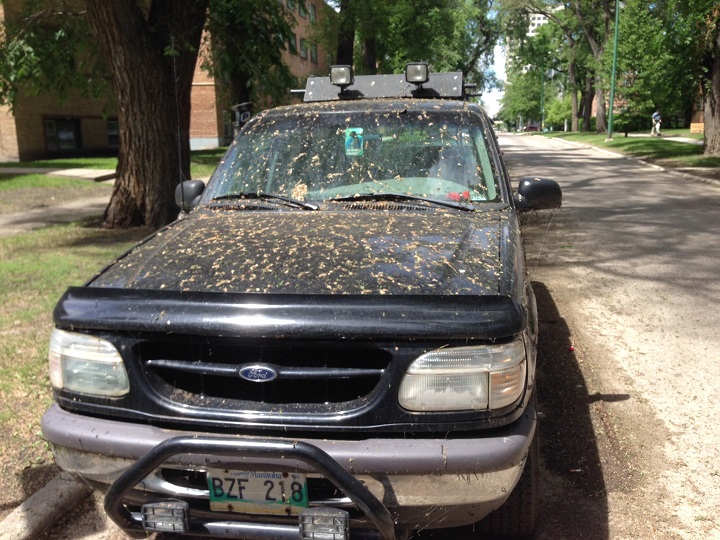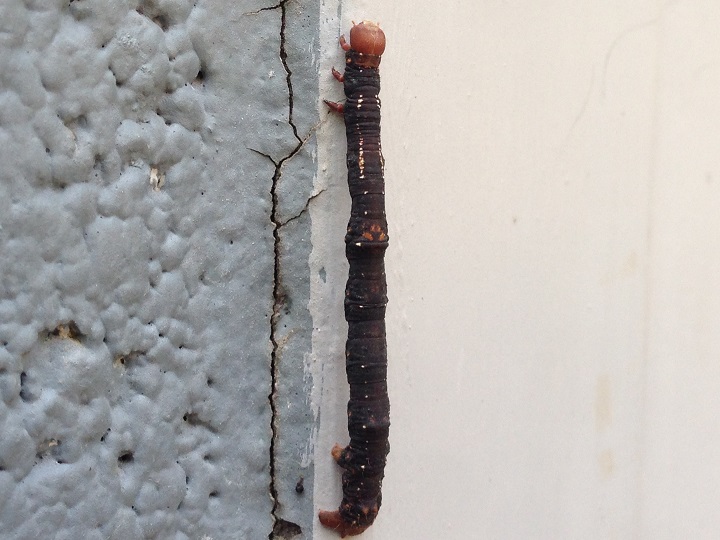WINNIPEG – A downtown Winnipeg neighbourhood is in the grips of a creepy crawly invasion.

Countless thousands of worms are covering sidewalks, cars and parking meters, crawling up walls and dangling from trees, and grossing out residents and passersby on Carlton Street north of Assiniboine Avenue and nearby streets.
“This is the first time I’ve seen anything like this … and I’ve been here 20 years,” said resident Alvin Zorget.
“You can’t ride on the sidewalk — you have to ride on the road to get away from them,” said Glenn Muzyka. “It’s disgusting.”
The long, thin black creatures sport a red head and small red feet at the fronts and backs of their bodies are elm spanworms, a city spokeswoman said.

Get daily National news
“Generally, this native pest feeds on elm, oak, red and sugar maple and ash. Egg hatch may begin in mid- to late May. Mature larvae, sometimes referred to as “loopers” or “inchworms,” are about 50 millimetres (2 inches) long. The body of the larval stage may be dull or slate black and the head rust-coloured. Bacillus thuringiensis var. kurstaki (BTK) can be used to control elm spanworm,” Lisa Fraser told Global News in an email.
“Our surveillance indicates that there are very isolated pockets (individual trees) of the elm spanworm. If significant damage is occurring to the tree canopy in a neighbourhood, the city would conduct a treatment using BTK. We will continue to monitor the elm spanworm over the next week, but their feeding activity will stop in about a week as they begin to enter their next life stage, the pupal stage.”


















Comments